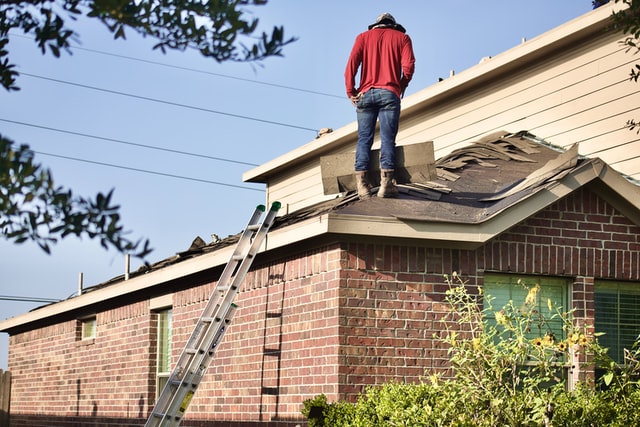
In Texas, homeowners insurance is not required by law. But mortgage lenders require you to carry it, making it an extra expense if you still owe money on your home. The financial protection that homeowners insurance offers can cover the costs of expensive repairs.
But you might wonder if this type of insurance covers roof repairs or replacements. After all, the average cost of a roof replacement ranges from $5,500 to $11,000. Coverage depends on the reason for the repair or replacement as well as the terms of your insurance policy.
Roof Replacement Due to Wear and Tear
Different roofing materials have distinct lifespans. Standard asphalt shingles might last for 15 years, while a metal roof could last for up to 70.
Roofing materials are exposed to high winds, intense sunlight, dramatic variations in temperature and inclement weather. Even if they’re not damaged in a storm, the materials lose their efficiency over time. Regular wear and tear eventually weakens the structure, making your home vulnerable to damage from moisture and pests. A compromised roof also contributes to energy leaks and high power bills.
If you notice signs that your roof needs to be replaced, you’ll probably start assessing your budget. At this point, you’ll likely want to consult with your insurance company to find out what they cover.
But you need to know that homeowner’s insurance generally doesn’t cover roof replacements due to normal wear and tear or age. Therefore, it probably won’t pay for you to replace your 20-year-old roof just because it’s time.
Roof Replacement Due to Covered Damage
The typical homeowners insurance policy will pay for covered damage no matter how hold the roof is. However, there are limitations and specifications. In most cases, the damage has to be caused by a covered event, such as extreme weather.
Most insurance companies give you a one or two-year window in which to file a claim after storm damage has occurred. However, it’s important to have an inspection and file a claim as soon as possible following the weather event that caused the damage. If you develop a leak because your shingles were damaged during a windstorm and you fail to react within a certain time frame, the insurance company may consider it general wear and tear. This is especially true if your roof is old.
In some cases, the extent of the damage matters. Some insurance policies won’t cover a few chipped shingles because they consider that to be a cosmetic issue. Furthermore, older roofs are more likely to have broken shingles due to gradual deterioration.
Tips for Getting Insurance Coverage for an Old Roof
The best way to secure coverage for a claim on an old roof is to contact a licensed roofer that works with insurance companies. Experienced local roofers monitor weather events that could impact homes in the area. It never hurts to have an inspection shortly after an extreme weather event featuring the following:
- Heavy, straight-line winds
- Tornadoes
- Hail
- Ice
- Lightning strikes
Hire a professional inspector. They’ll need to demonstrate that the current damage was caused by the extreme weather event.
Check the Policy When You Get a New Roof
Let’s say that it’s time for a roof replacement. You’ll also need to consider future coverage for the new roof if you plan to live in this house for a long time. Some policies have exclusions for certain roofing styles or materials. If you want to ensure that your insurance will pay in a future emergency, confirm that your options are covered.
Get Regular Maintenance
They’ll also need to rule out general wear and tear as the cause of the damage. That’s why it’s so important to keep your roof in good shape.
Regular maintenance manages minor issues before they have a chance to develop into major ones. If an old but well-maintained roof is damaged in a storm, the injury is likely to be from the storm. But if you already have rotting underlayment, cracked shingles and clogged gutters, a leak after a storm could be attributed to poor overall maintenance.
Keep all of your maintenance and repair receipts. Showing these to the insurance company will increase your chances of getting coverage for an older roof.
If you’re getting regular maintenance anyway, take pictures of your roof during inspections. Having evidence of the damage within a specific timeline will help your case.
How Much Will My Insurance Cover?
The type of roof damage that is often covered includes the following:
- Wildfire damage
- Tree and limb damage
- Hail damage
- Holes in the roof
- Lightning strikes
- Torn-off roof
- Creased shingles
If the damage is minor, the insurance company may pay for repairs instead of a roof replacement. The insurance company will probably pay for a replacement if your roof is nearing the end of its life. But the damage must be extensive and covered.
Getting an inspection is the best way to know if you have damage. After a storm, consult with a professional roofer to determine the best course of action. Regular inspections allow you to track the health of your roof so that you can file a claim if there is an incident.
Let us know if you have any questions about your insurance coverage so that you can protect your home or office. We will help you take care of any issues quickly and efficiently.





